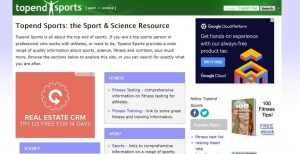Everywhere we turn, study after study claims marketing and sales leaders have “already implemented or are planning to implement predictive analytics in the coming 12 months.” Everybody’s doing it, right? Are you doing it? Probably not. But I bet “you know a guy who knows a guy” who is “killing it” with predictive analytics, right? Right …

If it sounds like the stuff of urban legends, that’s probably because it is. In what has become perhaps the most over-promised and most under-delivered demand generation trend in recent years, everyone is throwing around the phrase ‘predictive analytics’ as one of their top B2B sales and marketing priorities, and yet there is no strong evidence anyone is really doing it.
Why is this? We’re all running at the shiny object but not really thinking through what it means to really build and leverage predictive analytics as a component of outcome-based demand generation.
How do you establish a ‘predictive’ connection? For predictive analytics to be meaningful, they must identify those factors that are the best indicators of a potential purchase — so it requires drawing correlations in your data between these factors and revenue outcomes. These correlations speak to two critical concepts — elasticity and velocity — which underlie structured demand generation KPIs that tell us something about how likely a buyer is to buy, and in what time frame. Except this data isn’t just lying around, and it is probably not part of a closed loop today. Before you can establish correlations — i.e., before you can predict anything — you must build a base of ‘structured’ demand generation data, and ensure this data is tied to contact-level transactional data in a closed loop.
What data is predictive? A starting place for structuring your demand generation data is building a progressive profiling model. Such a model needs to capture not only core contact and firmographic/demographic information, but also must capture key segmentation information (which may not be firmographic/demographic), as well as behavioral information at a content offer and engagement channel level. A qualified buyer will have not only descriptive characteristics, but also will show predictable patterns of sustained, multi-channel engagement and specific content consumption behaviors that indicate where (s)he is the buying process — a ‘critical path.’
You need to make sure the data you are using to predict is fully ‘predictive’ — i.e., that it is assembling a profile of your ideal buyer(s) and can discern critical path. What about so-called ‘predictive analytics’ data from third party vendors in the marketplace today? This data may be value-added to your model, and may layer in additional, meaningful information via external marketplace activity and triggers that are partially predictive — meaning it may be a factor into your model — but given the lack of buyer context in this data, it should never represent the core.
Is it contact-level predictive or account-level predictive? Time and again we find that the most actionable and ‘predictive’ data exists at the contact level. Buyers buy, not companies. So-called ‘account-based’ scoring and analytics have limited value without being able to predict individual buyer intent — and drive one-on-one conversations with these buyers. It’s what happens at the contact level that really shows patterns and behaviors, and it’s a roll-up of contact-level insights that really give you insight into what’s going on at an account level. This ‘bottoms-up’ picture is much more predictive and indicative than a top-down approach.
Is your predictivity focused on improving an outcome? Perhaps the most important element that is missed in predictive analytics efforts is that the goal must be to drive more revenue outcomes, not generate so-called ‘MQLs’ — i.e., predictive analytics must refine, improve and optimize your lead-to-revenue process over time. This underpinning is something we refer to at ANNUITAS as Demand Process and should be foundational. Thus, when you build your predictive model, it must be tightly linked to Demand Process improvement, which means that the process context must come before the predictive model, not vice versa.
Business & Finance Articles on Business 2 Community(31)







